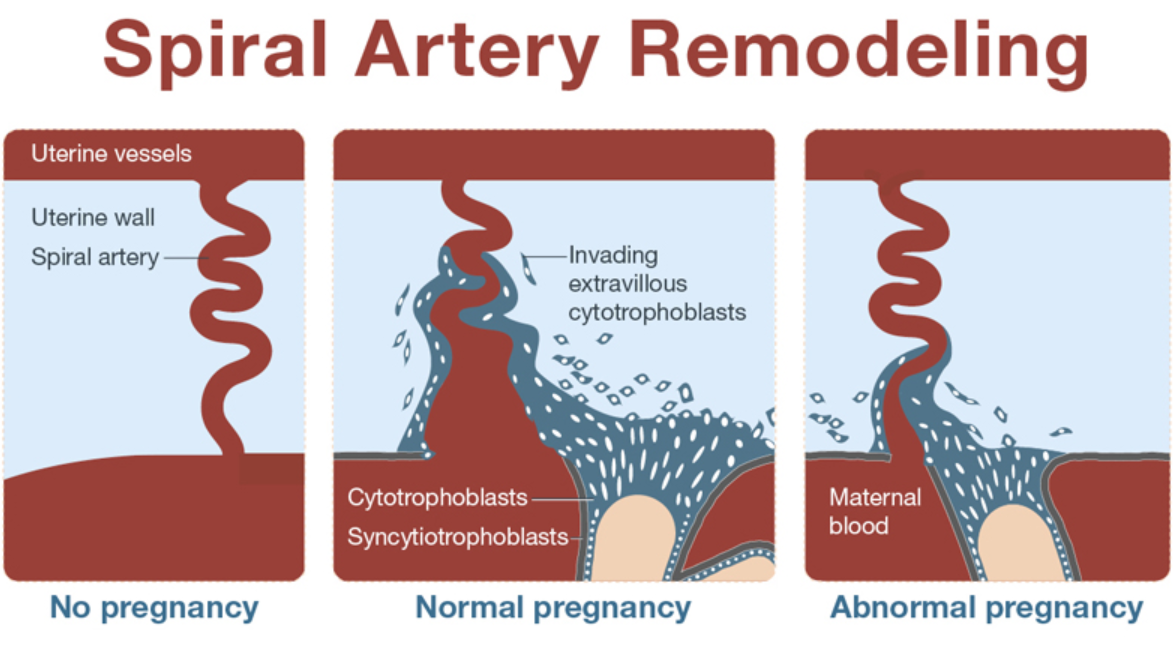Newborn with chlamydia
Chlamydia in newborns
Start over with a New Search
What is chlamydia?
Chlamydia (kla-mid-ee-ah) is a bacteria that causes eye infections and pneumonia in babies. A baby gets chlamydia from the mother during childbirth. If not treated, chlamydia infections will get worse.
What are the signs of chlamydia?
Signs of an eye infection are:
- Yellow-green eye drainage
- Swelling of the eyelid
Signs of pneumonia are:
- Fast breathing
- Trouble breathing
- Fever
- Coughing
- More sleepy than usual
What can I do for my baby?
For an eye infection:
Wash the eyes with a clean washcloth and water. Wipe the eyes from the inner corner to the outer corner with a separate area of the washcloth for each eye, making sure all dried drainage is gone. Apply eye drops or ointment as prescribed by the doctor.
Most babies may return to day care after they have no drainage and have used the prescribed medicine for at least 24 hours.
For pneumonia, antibiotics will be prescribed to give by mouth.
When should I call the clinic?
Call if the signs of infection last longer than one week or get worse while taking the antibiotic.
What else do I need to know?
Chlamydia is a sexually transmitted disease (STD). You can get chlamydia from vaginal sex, anal sex, or oral sex. Chlamydia can be cured. The mother and sex partner need to be cultured and treated. If not treated, the infection can cause pain and permanent damage to the sex organs. This damage can leave men and women unable to have children.
What should I do if I have chlamydia?
- The doctor will prescribe an antibiotic for 2 weeks. Allow about 3 weeks for recovery.
- Always use condoms.
- You do not need to miss school or work.
What can I do for comfort while I am being treated?
Women
- Keep your genital area clean: use plain unscented soaps.

- Take showers instead of tub baths.
- Wear cotton underwear or underwear with cotton crotch.
- Avoid sitting in wet clothes, such as a swimsuit.
- When using the toilet, wipe from front to back.
- Avoid douches and irritating sprays.
- If you have diabetes, follow your treatment plan.
- Avoid pants that are tight in the crotch and thighs.
- Change tampons often.
- If urinating causes burning, urinate while bathing or through a tube, such as a toilet paper roll or plastic cup with the end cut out.
- Avoid overexertion, heat, or a lot of sweating.
Men
- Keep your penis clean: use plain unscented soaps.
- Wear cotton under shorts.
- Avoid tight pants.
- Avoid overexertion, heat, or a lot of sweating.
How can I prevent chlamydia?
- Limit your number of sex partners.
- Always use latex condoms.
- Be aware of changes in your body so you can seek treatment as soon as possible.

When should I call my clinic?
Call the clinic if:
- Signs of vaginal infection such as a change in vaginal drainage or itching.
- Symptoms last longer than one week or get worse while taking the antibiotic.
- Unusual vaginal bleeding.
- Swelling of the genitals.
Questions?
This sheet is not specific to your child but provides general information. If you have any questions, please call the clinic.
Children's Hospitals and Clinics of Minnesota
Patient/Family Education
2525 Chicago Avenue South
Minneapolis, MN 55404
Last Reviewed 7/2015 © Copyright
Back To Top
This page is not specific to your child, but provides general information on the topic above. If you have any questions, please call your clinic. For more reading material about this and other health topics, please call or visit Children's Minnesota Family Resource Center library, or visit www.childrensmn.org/educationmaterials.
© 2022 Children's Minnesota
Chlamydia - HealthyChildren.org
Log in | Register
Health Issues
Health Issues
Listen
Español
Text Size
Chlamydia is the most commonly reported sexually transmitted infection (STI). Caused by Chlamydia trachomatis bacteria, it occurs at high rates in sexually active teenagers. A genital Chlamydia infection can be spread between sexual partners during vaginal, oral, or anal sexual contact. An infected mother can pass it on to her newborn child. In fact, about 50% of infants delivered vaginally to infected mothers get chlamydia. A smaller number delivered by cesarean birth also get the disease.
If present beyond the newborn period in a child who has not yet reached puberty, a chlamydial infection may be a sign of sexual abuse.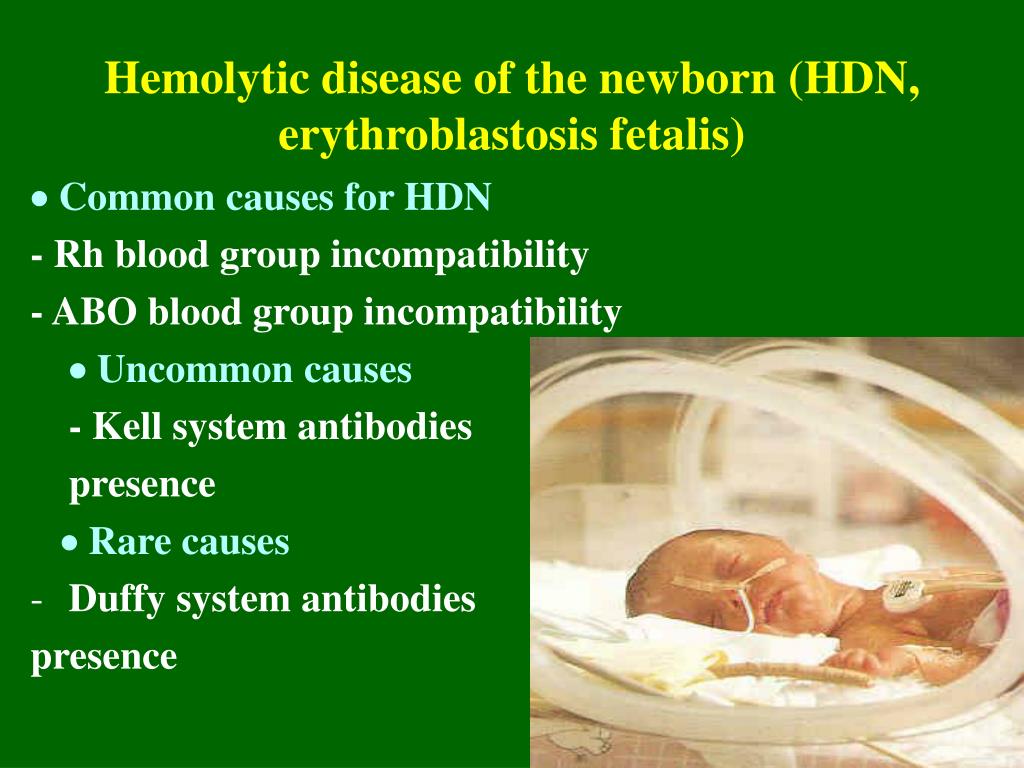
Signs and Symptoms
Chlamydial infection is often called a “silent disease” because so many infected people have no symptoms. This is the case with about three fourths of infected females and about half of infected males. As a result, many infections go unrecognized.
When symptoms are present, females may have:
- An abnormal vaginal discharge
- A burning sensation during urination
- Lower abdominal pain
- Low back pain
- Fever
- Nausea
- Bleeding between periods
- Painful sexual intercourse
Males may have:
- An abnormal discharge from the penis
- Itching or burning around the tip of the penis
- A burning sensation while urinating
- Tenderness or pain of the testicles
Males and females may develop Reiter syndrome with arthritis, burning during urination, and inflammation with redness of the eyes. When newborns get a chlamydial infection from their mothers, they may develop eye inflammation (conjunctivitis) with redness, swelling, and discharge, with or without pneumonia.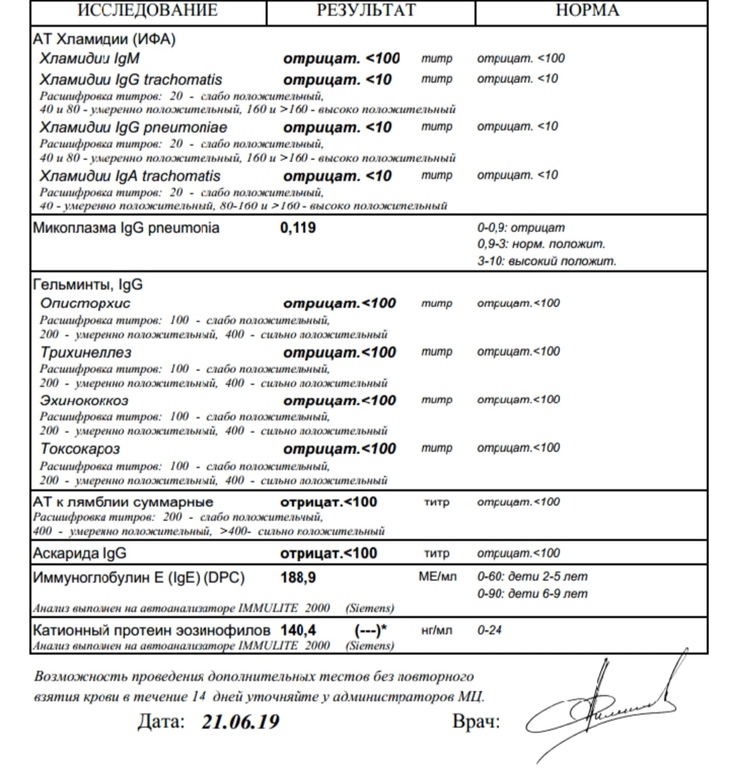 The pneumonia often causes cough and rapid breathing.
The pneumonia often causes cough and rapid breathing.
If illness is present, it typically begins after an incubation period of 1 to 3 weeks. Pneumonia may occur up to several months after birth in newborns.
What You Can Do
Any sexually active male or female can be infected with C trachomatis. Make sure your teenaged son or daughter knows about the risks of a sexually active lifestyle and how to practice safe sex.
When To Call Your Pediatrician
Call your pediatrician if your child complains of symptoms listed here. If your newborn has an eye discharge or cough, you should call your pediatrician.
How Is the Diagnosis Made?
Your doctor can collect a specimen (eg, of pus) from the cervix or penis and have it tested in the laboratory for evidence of chlamydial infection. A urine sample can also be tested.
If a chlamydial infection is diagnosed in a sexually active teenager, he should be tested for other STIs, including syphilis, HIV, gonorrhea, and hepatitis B.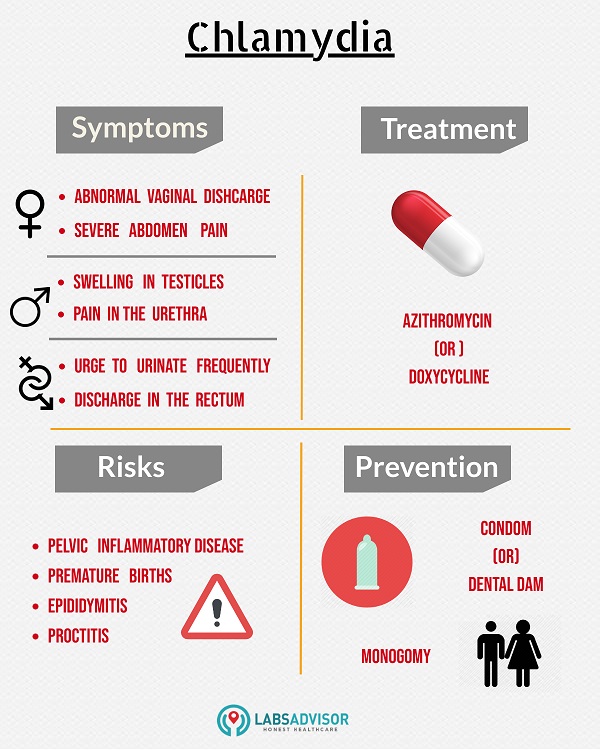 Gonorrhea and chlamydial infection often occur together. His sexual partner(s) should also be notified and tested.
Gonorrhea and chlamydial infection often occur together. His sexual partner(s) should also be notified and tested.
Treatment
To treat chlamydia, your pediatrician will prescribe antibiotics such as oral doxycycline or azithromycin.
A child with chlamydial pneumonia or conjunctivitis should be treated with oral medications like erythromycin. Topical treatment of the eye infection, such as with eyedrops, is ineffective and unnecessary.
What Is the Prognosis?
Prompt treatment should resolve a chlamydial infection and prevent complications. If the infection is not treated, serious complications can develop, including pelvic inflammatory disease (PID) which is an infection of the uterus, fallopian tubes, or ovaries in girls and women that can lead to chronic pelvic pain, infertility, and ectopic pregnancies (pregnancy outside the uterus). A person with a chlamydial infection is also more likely to contract an HIV infection. Complications are less common in teenaged boys and men, but may include inflammation of the epididymis (the coiled tube that runs along the back of the testicles).
Prevention
Your teenager can avoid getting chlamydia by practicing safe sex. If your teenaged daughter is sexually active, she should be screened or tested for a C trachomatis infection, even if she doesn’t have symptoms.
- Last Updated
- 11/21/2015
- Source
- Adapted from Immunizations and Infectious Diseases: An Informed Parents Guide (Copyright © 2006 American Academy of Pediatrics) and updated 2011
The information contained on this Web site should not be used as a substitute for the medical care and advice of your pediatrician. There may be variations in treatment that your pediatrician may recommend based on individual facts and circumstances.
Chlamydia - KVD №2
What is chlamydia?
Chlamydia is a common sexually transmitted infection (STI). The disease is caused by the bacterium Chlamydia trachomatis (Chlamydia trachomatis), which affects the female genital area and is the cause of non-gonococcal urethritis in men. Manifestations of chlamydia are usually minor or absent, but serious complications develop. Complications can cause irreparable damage to the body, including infertility - all this proceeds very secretly.
The disease is caused by the bacterium Chlamydia trachomatis (Chlamydia trachomatis), which affects the female genital area and is the cause of non-gonococcal urethritis in men. Manifestations of chlamydia are usually minor or absent, but serious complications develop. Complications can cause irreparable damage to the body, including infertility - all this proceeds very secretly.
Chlamydia also causes penile discharge in infected men.
Chlamydia transmission routes
Chlamydia can be transmitted through:
- vaginal or anal contact with an infected partner;
- less common with oral sex;
- use of sex toys with an infected partner;
- infection of a newborn during childbirth from a sick mother.
Absolutely all sexually active people can get chlamydia. The greater the number of sexual partners, the greater the risk of infection. The risk of infection is especially high in girls, because their cervix is not fully formed. About 75% of new cases occur in women under 25 years of age. By the age of 30, approximately 50% of sexually active women have had chlamydia. In sexually active men, the risk of infection is highest between the ages of 20 and 24.
About 75% of new cases occur in women under 25 years of age. By the age of 30, approximately 50% of sexually active women have had chlamydia. In sexually active men, the risk of infection is highest between the ages of 20 and 24.
You cannot get chlamydia through kisses, hugs, dishes, baths, towels.
Manifestations of chlamydia
Chlamydia is very secretive. About 75% of infected women and 50% of infected men are asymptomatic. If manifestations of the disease develop, then this occurs approximately 1 to 3 weeks after infection.
In women, chlamydia first affects the cervix and urethra (urinary canal).
Manifestations:
- unusual vaginal discharge;
- pain or discomfort when urinating;
If the infection penetrates to the appendages, manifestations are possible:
- pain in the lower abdomen;
- pain in the lumbar region;
- nausea;
- slight increase in temperature;
- pain during intercourse or bleeding after it;
- bleeding between periods.
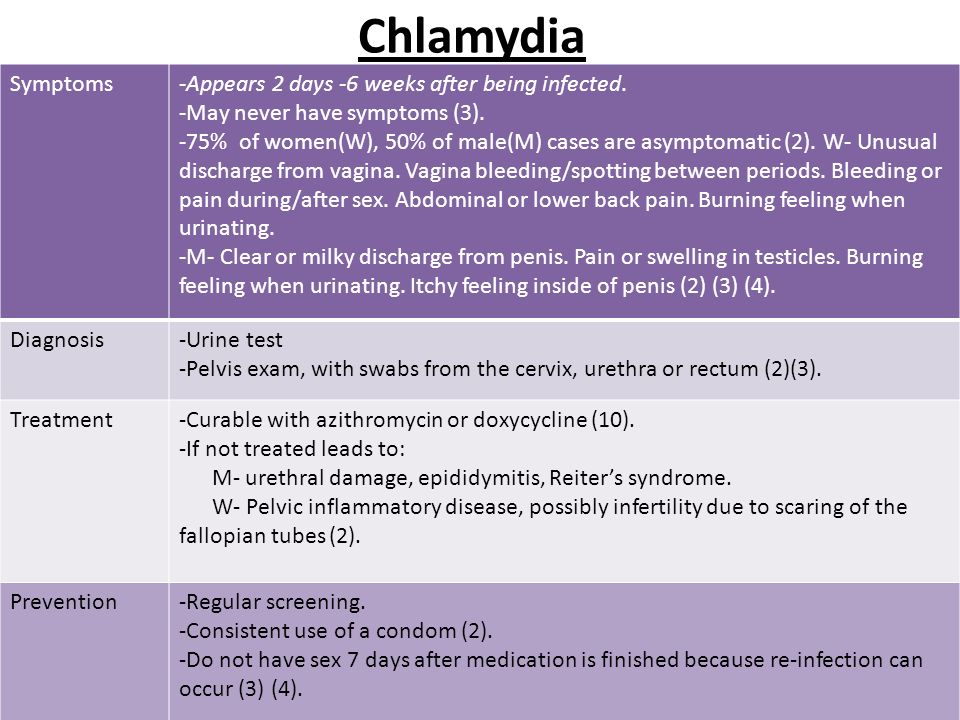
Symptoms in men:
- clear or cloudy discharge from the penis;
- pain or discomfort when urinating;
- there may be burning and itching in the area of the outlet of the urethra;
- rarely pain and/or swelling of the testicles.
Men or women who have anal sex with an infected partner can infect the rectum, resulting in inflammation, pain, discharge, or bleeding from the rectum.
Chlamydia can cause sore throat (pharyngitis) in men and women who have oral contact with an infected partner.
What complications can develop if chlamydia is not treated?
If the disease is not treated, serious short-term and persistent complications develop. Like the disease itself, complications often occur insidiously.
In women with untreated chlamydia, infection can spread from the urethra to the fallopian tubes (the tubes that carry the egg from the ovaries to the uterus) - this causes (in 40% of cases) the development of pelvic inflammatory disease (PID).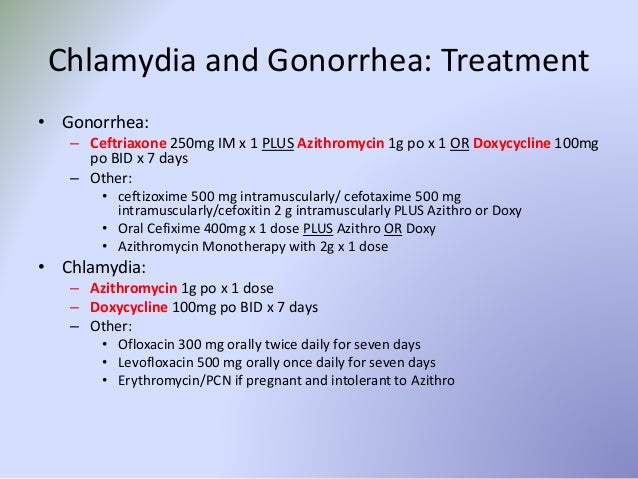 PID causes permanent damage to the fallopian tubes, uterus, and surrounding tissues. Chronic pelvic pain, infertility and ectopic pregnancy are the result of PID.
PID causes permanent damage to the fallopian tubes, uterus, and surrounding tissues. Chronic pelvic pain, infertility and ectopic pregnancy are the result of PID.
Women with chlamydia are more susceptible to HIV infection, the risk increases by almost 5 times.
To prevent serious consequences of chlamydia, annual chlamydia screening is required for all sexually active women 25 years of age and younger. An annual examination is necessary for women over 25 who are at risk (new sexual partner, multiple sexual partners). All pregnant women should be screened for chlamydia.
Complications of chlamydia are rare in men. The infection sometimes extends to the epididymis and causes pain, fever, and, rarely, male infertility (sterility).
Rarely, chlamydial infection can cause inflammation of the joints in combination with skin lesions, inflammation of the eyes and urinary tract - this is the so-called Reiter's syndrome.
The effect of chlamydia on a pregnant woman and her child
Chlamydia in pregnant women increases the risk of miscarriage, premature detachment of the placenta.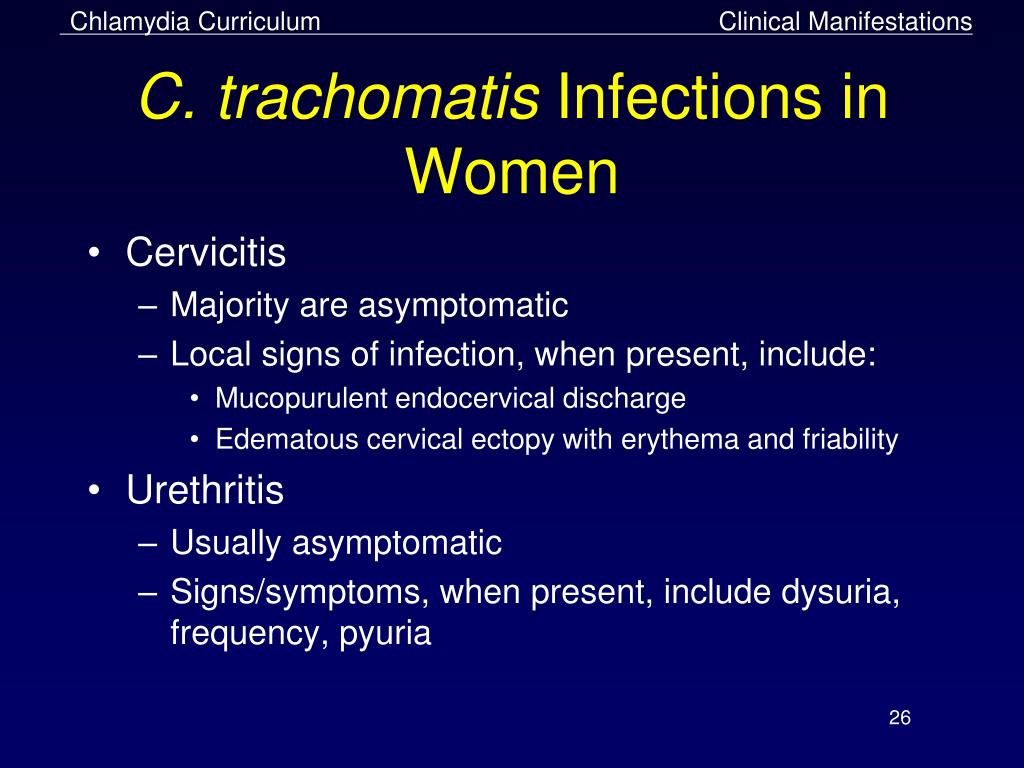 Newborns from infected mothers can get eye and lung infections. A lung infection (pneumonia) can be fatal to a newborn.
Newborns from infected mothers can get eye and lung infections. A lung infection (pneumonia) can be fatal to a newborn.
Diagnosis of chlamydia
Diagnosis includes observation of the patient's clinical symptoms, testing for chlamydia smears from the cervix, scraping from the urinary canal, the first morning urine. Most often, the study is carried out by PCR (polymerase chain reaction). Swabs and scrapings may cause minor discomfort.
In addition, a blood test by ELISA (enzyme-linked immunosorbent assay) for the presence of immunity to chlamydia is carried out, this auxiliary test often helps to establish an accurate diagnosis.
Treatment of chlamydia
Treatment of chlamydia is with oral antibiotics. To prevent re-infection, all sexual partners must be found, examined and treated. Patients with chlamydia should refrain from unprotected sex during treatment, otherwise it is possible to re-infect the sexual partner. Unfortunately, after successful treatment, re-infection with chlamydia is possible, since a strong immunity to this microorganism does not develop. Repeated infection of women with chlamydia leads to a significant increase in the risk of serious complications, including infertility. A re-examination is carried out 4 weeks after treatment.
Repeated infection of women with chlamydia leads to a significant increase in the risk of serious complications, including infertility. A re-examination is carried out 4 weeks after treatment.
Prevention of chlamydia
The best way to prevent sexually transmitted infections is through long-term sexual contact with one healthy sexual partner. Latex male condoms, when used correctly, drastically reduce the risk of transmission.
Annual chlamydia screening required for all sexually active women 25 years of age and younger. An annual examination is also necessary for women over 25 who are at risk (new sexual partner, multiple sexual partners). All pregnant women should be screened for chlamydia.
Any manifestations, such as pain or discomfort when urinating, unusual rash, discharge are a signal to stop sexual intercourse and immediately examine in a specialized clinic - KVD. If the patient is found to have chlamydia (or any other STI), he must inform his sexual partners so that they also undergo a full examination and appropriate treatment.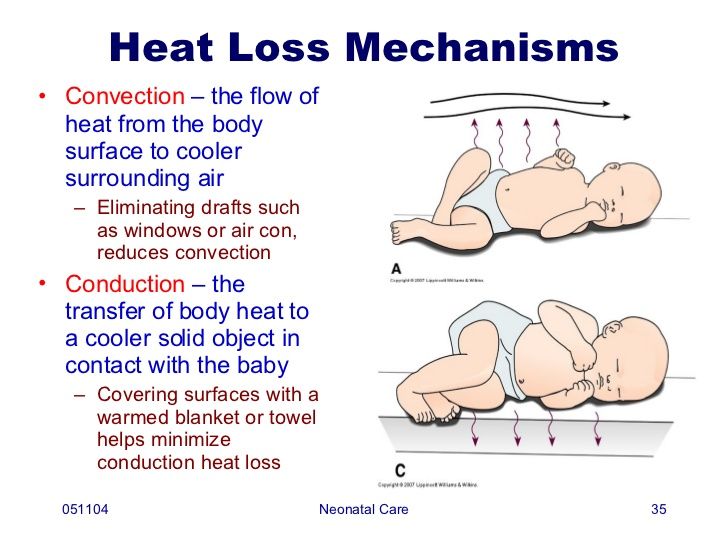 This will reduce the risk of developing serious complications and prevent the possibility of re-infection.
This will reduce the risk of developing serious complications and prevent the possibility of re-infection.
Patients with chlamydia should refrain from unprotected sex during treatment, otherwise the sexual partner may be re-infected.
Chlamydia
Chlamydia
Chlamydia is a group of infections caused by various types of chlamydia. They affect the respiratory, cardiovascular, musculoskeletal, genitourinary systems, organs of vision. Urogenital chlamydia has manifestations of inflammatory diseases: urethritis, prostatitis, cystitis, vulvovaginitis, cervicitis, erosion, endometritis and is detected only by specific diagnostic methods. A characteristic symptom is glassy discharge from the urinary tract. Chlamydial infections are dangerous with multiple complications, including ascending urinary tract infections, infertility, neurochlamydia, joint damage, heart and vascular disease, and impotence in men.
Urogenital (urogenital) chlamydia is a sexually transmitted infection caused by chlamydia (Chlamydia trachomatis). The problem of urogenital chlamydia is very acute today. In recent years, an increase in chlamydia has been observed both among the sexually active adult population (men and women from 20 to 40 years old) and among adolescents. Early sexual relations, unprotected sex with casual partners, lack of awareness of the possible consequences of such relationships put chlamydia in one of the first places in the list of sexual infections. Almost 9 people are infected with chlamydia every year.0 million people. Individuals with reduced immunity are especially susceptible to chlamydia. In 40% of cases, chlamydial infection causes various gynecological diseases, in 50% - tubal-peritoneal infertility. Often chlamydia is combined with other sexually transmitted infections: gardnerellosis, ureaplasmosis, trichomoniasis, gonorrhea, syphilis, mycoplasmosis, thrush. The combination of several infections aggravate the course of each other and lengthen the treatment. Women are more susceptible to chlamydia.
The problem of urogenital chlamydia is very acute today. In recent years, an increase in chlamydia has been observed both among the sexually active adult population (men and women from 20 to 40 years old) and among adolescents. Early sexual relations, unprotected sex with casual partners, lack of awareness of the possible consequences of such relationships put chlamydia in one of the first places in the list of sexual infections. Almost 9 people are infected with chlamydia every year.0 million people. Individuals with reduced immunity are especially susceptible to chlamydia. In 40% of cases, chlamydial infection causes various gynecological diseases, in 50% - tubal-peritoneal infertility. Often chlamydia is combined with other sexually transmitted infections: gardnerellosis, ureaplasmosis, trichomoniasis, gonorrhea, syphilis, mycoplasmosis, thrush. The combination of several infections aggravate the course of each other and lengthen the treatment. Women are more susceptible to chlamydia.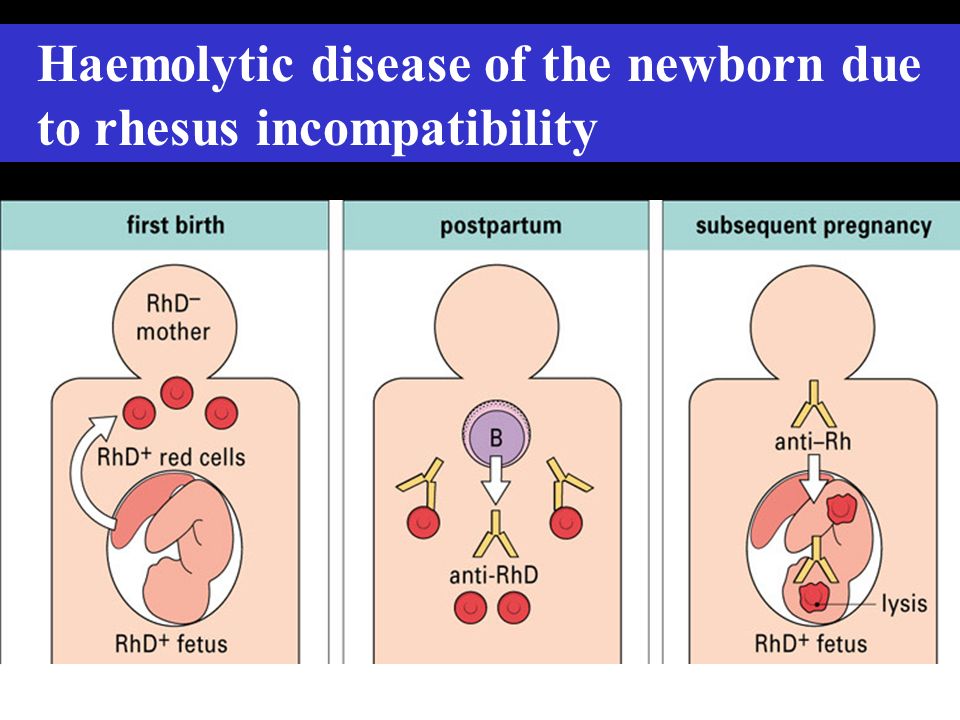
Symptoms of chlamydia
Asymptomatic course of chlamydia occurs in 67% of women and 46% of men, which often complicates its diagnosis and treatment, increases the risk of complications. Even with a latent course of chlamydia, a sick person is potentially dangerous and is able to infect his sexual partner. Usually the first clinical manifestations of chlamydia occur 7-14 days after sexual infection.
Men develop mucopurulent or watery discharge from the urethra, itching and burning during urination. There is swelling and redness of the external opening of the urethra. Gradually, the symptoms subside, the discharge is observed only in the morning. The acute phase of chlamydia is replaced by a chronic one with damage to the urethra.
In women, chlamydia is manifested by pathological discharge from the vagina of a mucous or mucopurulent nature, yellowish in color, with an odor. Sometimes the discharge is accompanied by itching, burning, low temperature, abdominal pain.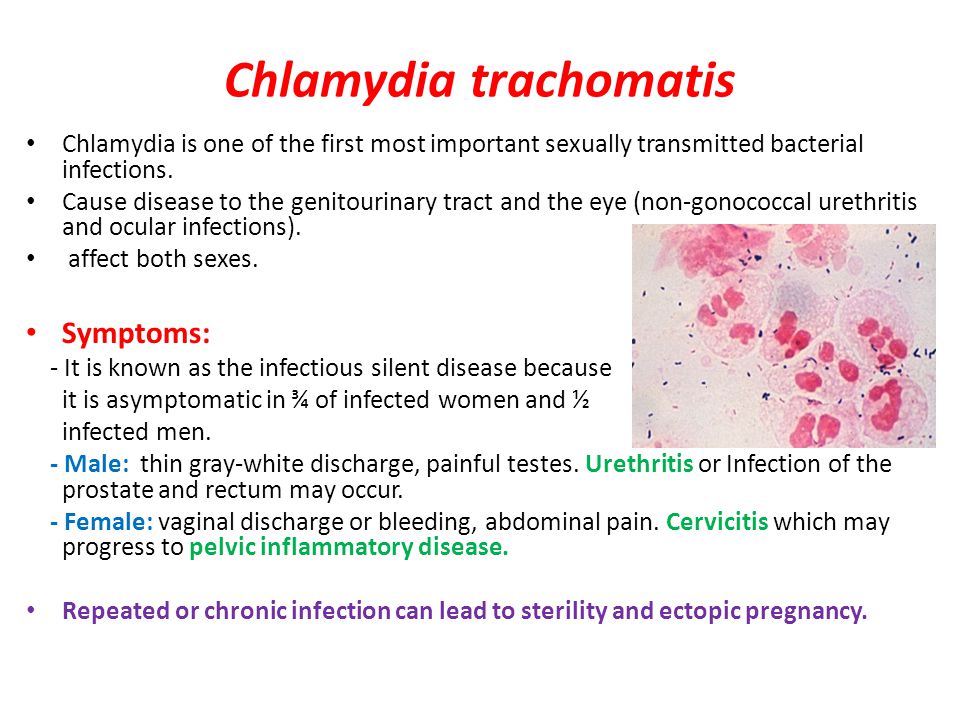
Complications of chlamydia
Urogenital complications of chlamydia in men are chlamydial prostatitis, urethritis, epididymitis.
- prostatitis develops when the prostate is involved in the infectious process. Chlamydial prostatitis is accompanied by discomfort and pain in the lower back, rectum, perineum, slight mucous or watery discharge from the urethra, difficulty urinating, impaired potency;
- urethritis occurs with lesions of the urethra and is characterized by itching in the urethra, frequent painful urge to urinate, mucopurulent discharge. Chronic urethritis caused by chlamydia leads to urethral stricture;
- epididymitis develops with inflammation of the epididymis, which is accompanied by high fever, swelling and redness of the scrotum, an increase in the epididymis.
Urogenital complications of chlamydia are fraught for men with impaired spermatogenesis and infertility.
Chlamydia is no less dangerous for women, causing various lesions of the female reproductive system. The ascent of chlamydial infection through the genital tract can cause inflammatory changes in:
The ascent of chlamydial infection through the genital tract can cause inflammatory changes in:
- cervix - endocervicitis. Chlamydia increases the risk of developing tumor processes in the cervix;
- mucous membrane of the uterine cavity - endometritis;
- fallopian (uterine) tubes - salpingitis;
- uterine appendages - salpingoophoritis.
Inflammatory processes of the uterus and uterine appendages with subsequent formation of adhesions and scars in the fallopian tubes cause tubal infertility, ectopic pregnancy, spontaneous abortion.
Other consequences of chlamydia in men and women can be inflammation of the pharynx, rectum, kidneys, joints, lungs, bronchi, etc. One of the serious complications of chlamydia is Reiter's disease, characterized by a triad of clinical manifestations: conjunctivitis, urethritis, arthritis. Re-infection with chlamydia significantly increases the risk of complications.
Newborn chlamydia is especially dangerous, resulting from infection of a child from a sick mother during childbirth.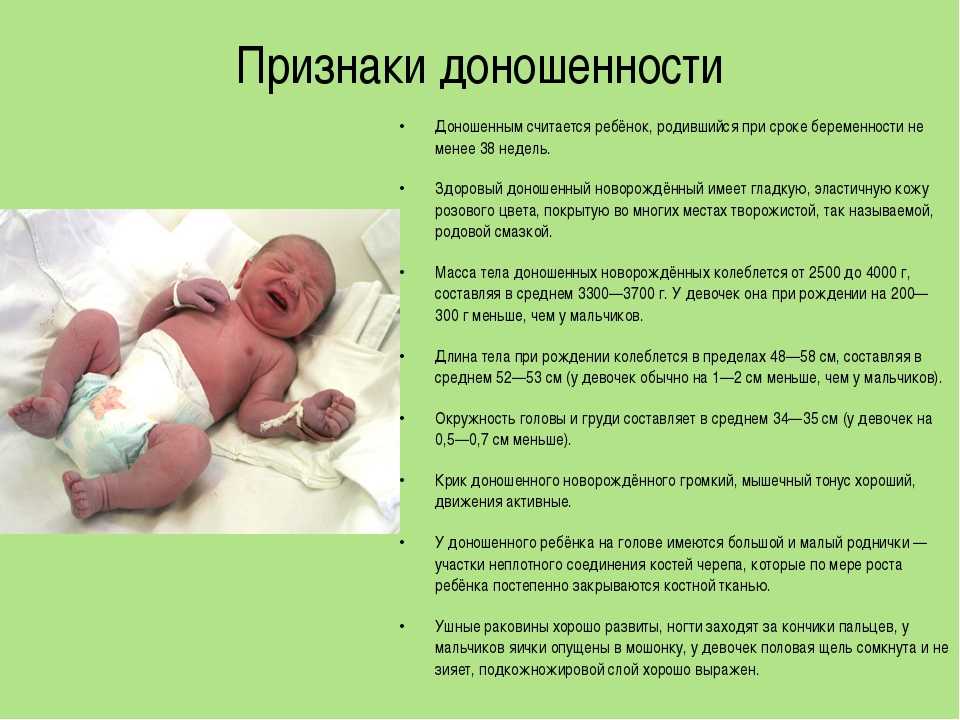 The main forms of congenital chlamydia are:
The main forms of congenital chlamydia are:
- chlamydial conjunctivitis (ophthalmochlamydia) - inflammation of the mucous membrane of the eyes
- generalized form of chlamydia - damage to the heart, lungs, liver, digestive tract
- encephalopathy with convulsions and respiratory arrest
- chlamydial pneumonia is an extremely severe form of pneumonia with a high mortality rate.
Diagnosis of chlamydia
Diagnosis of chlamydia in men is often done by urologists. A visit to a venereologist is necessary to exclude other STIs that the patient could have contracted along with chlamydia. Women need a consultation with a gynecologist.
Treatment of chlamydia
As in the treatment of any bacterial infection, antibacterial drugs are used for chlamydia. Since the causative agent of chlamydia Chlamydia trachomatis is a parasitic intracellular microorganism, the choice of antibiotics is limited to those drugs that penetrate the cells.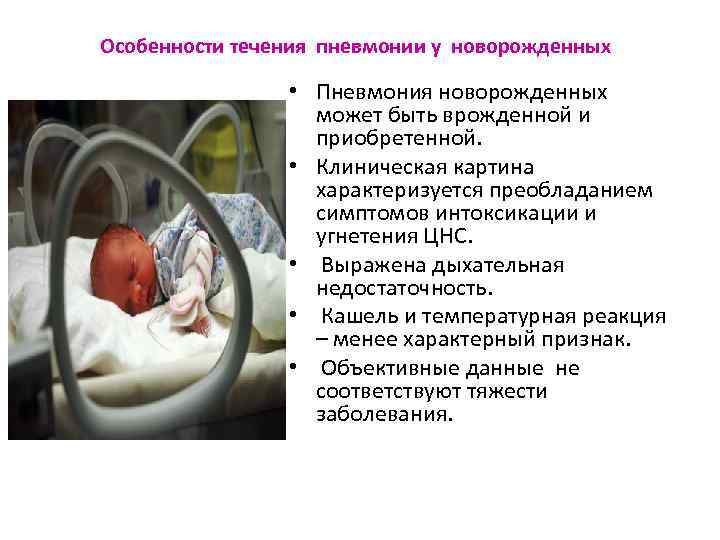 These drugs include macrolide antibiotics, tetracyclines, and fluoroquinolones. When selecting antibiotics, the presence of a mixed infection (mycoplasma, gardnerella, ureaplasma) is taken into account for their simultaneous treatment.
These drugs include macrolide antibiotics, tetracyclines, and fluoroquinolones. When selecting antibiotics, the presence of a mixed infection (mycoplasma, gardnerella, ureaplasma) is taken into account for their simultaneous treatment.
In addition to the antibiotic, the treatment regimen for chlamydia includes immunomodulators (viferon, cycloferon), antifungal drugs (nystatin, flucostat), multivitamins, enzymes (mezim), bacteriophages (coliphage, interstibacteriophage, staphylococcal, proteic), probiotics (acylact, bifidumbacterin , colibacterin), physiotherapy (ultrasound therapy, magnetotherapy, iontophoresis and electrophoresis with medicinal substances).
Vaginal and rectal suppositories, baths, tampons, enemas are used for topical treatment of chlamydia.
During the course of treatment (on average 3 weeks), it is recommended to exclude sexual contacts, alcohol, spices, spicy food, excessive physical activity.
The treatment of chlamydial infection is a complex medical problem, and it must be solved taking into account the individuality of each patient.









